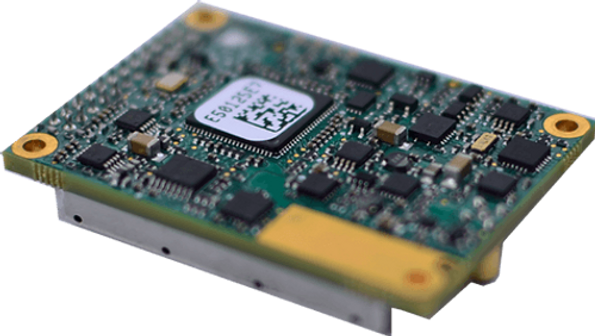Ethernet radio networks have revolutionized industrial communications by offering seamless wireless connectivity. It’s a high-performance solution that offers both the bandwidth and the scalability that operators need for modern enterprise and industrial functions .
It’s a very versatile technology that is being adopted for everything from SCADA communications to environmental monitoring, military applications, and artificial intelligence solutions. By allowing high-speed real-time data communications and analysis, Ethernet is changing the way we work.
Here’s a quick primer on Ethernet-based connectivity and solutions.
What Makes Ethernet So Special
Ethernet is a wireless network technology similar to WiFi and Local Area Networks (LAN), except much more powerful and less bulky. You don’t need cables or device-to-device network wiring. Just one modem can beam an Ethernet connection to all of the devices in an office, including smartphones, landlines, laptops, printers, and more.
Ethernet software defined radios (SDRs) work on the same principle; they can beam an Ethernet connection to programmed devices thousands of miles apart, if necessary. This is a big step up from traditional radio connectivity offered by ‘serial radios.’ This was a slow, cumbersome means of data transfer that was entirely unsuitable for the needs of present-day business communications.
What’s more, serial or analog radios are configured to receive and transmit a specific radio protocol. If you need to switch frequencies, you have to replace the radio. With Ethernet SDRs on the other hand, signal transmission and reception happens digitally. These devices can be reprogrammed to allow new algorithms and protocols without replacing the hardware. This allows you to scale effortlessly as your needs diversify or your business expands.
Advantages of Ethernet Wireless Radios

Here are a host of reasons why Ethernet radios are the future:
- Powerful Network: Ethernet is purpose-built to handle large volumes of data and transmit them at blinding speeds. What’s more, it can simultaneously support receive and transmit functions for multiple devices on different channels.
- Data Integrity: Ethernet is a much more reliable network than some others due to its built-in protections against data loss. TCP/IP for example, will stop all further transmission until it’s able to secure a lost packet of data.
- Flexibility: The fact that Ethernet devices can be reconfigured to new protocols gives you exceptional flexibility to scale your enterprise. It’s also a cost-effective means of communications, since you don’t have to replace your hardware to support new functions.
- Real-Time Monitoring and Analysis: Ethernet is ideal for industrial applications where real-time monitoring is necessary, such as for SCADA systems and remote command and control.
Ethernet-Based Radio Solutions
Ethernet technology has inspired a plethora of solutions and accessories to support industrial connectivity. Here are some of the different types of Ethernet radios you should be aware of.
1. Debian Ethernet Radios
Debian Ethernet radios are among the most capable SDRs you will find. Based on the open source Debian operating system (OS), these offer outstanding performance and flexibility, often covering a vast range of frequency bands. While typical industrial frequencies include the 400 MHz, 900 MHz, and 2.4 GHz bands, with the right provider, you can access a very broad range of frequencies, including everything from 150 MHz
to 2.4 GHz.
These are ideal for advanced industrial applications involving processing Big Data in real time and performing critical command and control functions.
2. Linux Ethernet Radios
Linux is a generic name for a family of open-source operating systems based on the Linux kernel. While not as cutting-edge as Debian radios, Linux Ethernet radios are nevertheless highly capable devices that offer superior performance across industrial applications. Users can choose between a broad range of frequencies with as many as eight programmable inputs and outputs, depending on the brand.
3. OEM Modules

OEM modules are essentially radio frequency (RF) devices offered in a smaller form factor so that they can be integrated into your products and solutions. While OEM modules are available in both serial-only and Ethernet varieties, the latter give you significantly better performance when it comes to data transmission.
With the right provider, OEM radios can even allow you to selectively switch transfer rates with an access point in order to achieve optimal data transmission for a given RF environment.
4. SDR Serial Radios
Serial radios, while an older technology, are still an important part of existing connectivity frameworks worldwide. Serial wireless modems support seamless data transmission between remote devices and control centers in real time for purposes such as monitoring, automation, and control across industries.
Ethernet-enabled serial radios are also a vital stopgap technology for legacy migration. Enterprises can leverage these devices to avail themselves of superior wireless performance while migrating to newer technology at their own pace.
5. Edge Computing
Edge computing devices enable you to store and compute data close to where it’s generated, allowing for lower latency in your wireless communications. This can prove key for applications where quick decision making is critical. For example, edge computing devices supported by Ethernet networks can allow you to capture and analyze data on-site at factories, energy installations, and environmental outposts, utilities, and more. The business intelligence you generate can help you avert shutdowns, troubleshoot problems, lower costs, and increase productivity.
Ethernet is fast becoming the preferred technology for any industrial or commercial application that requires data communications. The fact that it’s a very flexible platform allows you a lot of freedom in the kind of features you can include with it. Users can expect an ever-increasing array of options and connectivity solutions when it comes to Ethernet networks.

